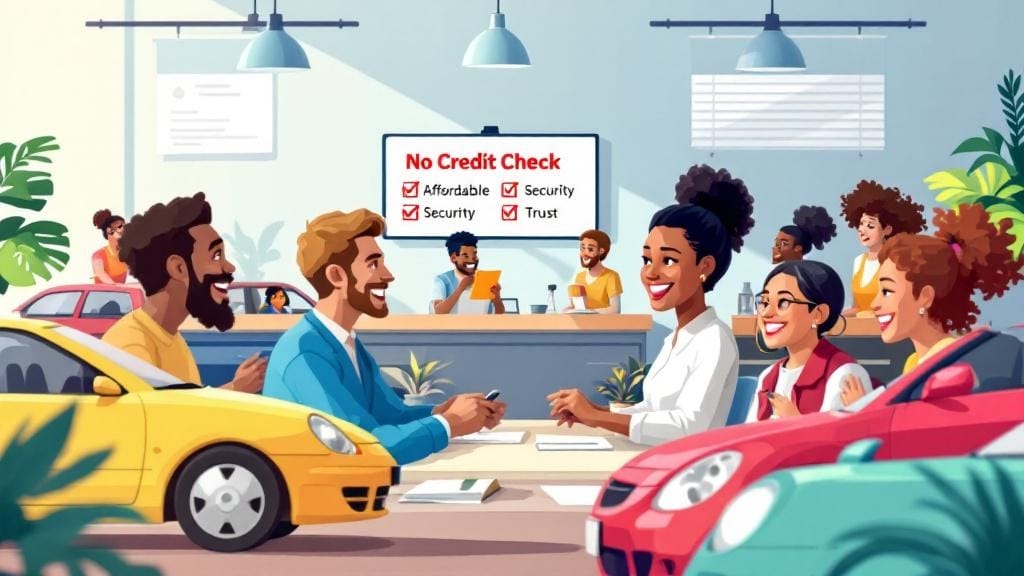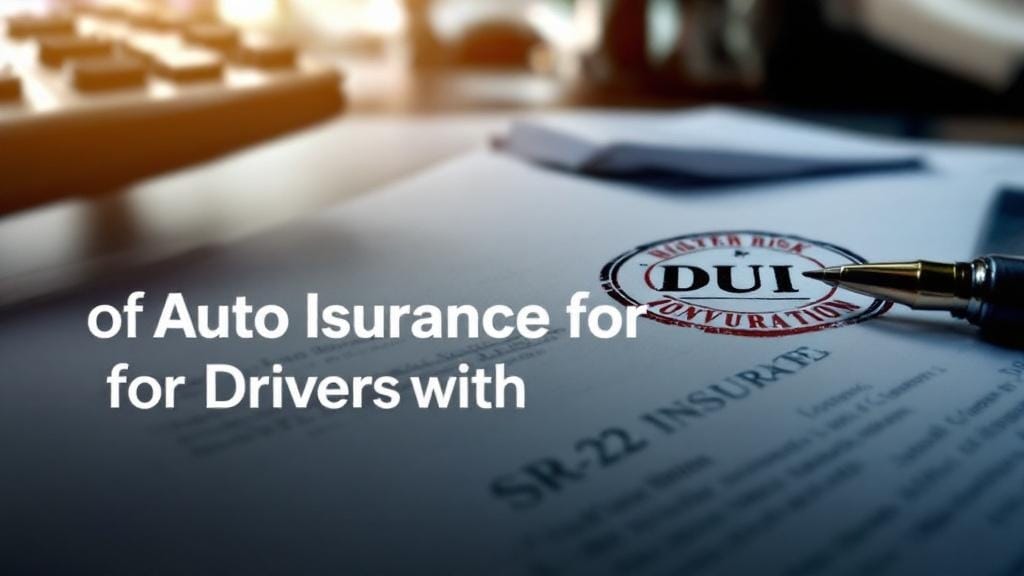Common mistakes first-time home buyers make, new developments in Liability relief services are transforming the way individuals manage their financial burdens, providing fresh hope to those overwhelmed by Liability. Did you know that consumer Liability in the United States has reached a staggering $16 trillion, prompting an urgent need for innovative solutions? As more individuals seek assistance, the Liability relief industry is evolving rapidly, integrating advanced technology, personalized services, and a focus on consumer education. This blog post delves into the latest trends, challenges, and opportunities in the realm of debt relief, offering insights that can help you or someone you know take control of their financial future.
Overview of the Common mistakes first-time home buyers make
As we delve into 2023, the landscape of debt relief services has evolved significantly, largely due to the increasing pressures on consumers from rising debts. From personal loans to credit card debt, individuals are facing unprecedented challenges, prompting the need for innovative solutions to help them regain financial stability.
The Rising Trend of Consumer Debt
In recent years, consumer debt has seen a marked increase. Factors contributing to this trend include:
- Economic instability
- Rising living costs
- Increased reliance on credit for everyday expenses
This situation has compelled many consumers to seek assistance from debt relief services, highlighting the urgency for new developments in debt relief services.
The Impact of Economic Factors on Debt Levels
Economic factors play a critical role in shaping the current debt landscape. In 2023, we have observed:
- An increase in job market volatility, leading to more financial uncertainty.
- Inflation rates affecting disposable income, causing consumers to turn to credit.
These factors have emphasized the importance of addressing debt issues promptly and effectively, with a spotlight on viable debt relief options.
Government Initiatives and Regulations
New policies introduced in 2023
The government has recognized the growing burden of consumer debt and introduced several initiatives aimed at improving access to debt relief services. Key developments include:
- Enhanced regulations for debt relief companies, ensuring consumer protection
- Increased funding for financial counseling programs
Regulatory changes affecting debt relief services
These new initiatives have facilitated improvements in the way debt relief services operate. Some of the notable regulatory changes include stricter licensing requirements for debt relief providers, which have led to an overall increase in service quality and accountability.
The Role of Federal and State Governments
Both federal and state governments are playing an active role in shaping the debt relief services landscape. Various programs have been enacted aimed at:
- Providing financial education resources
- Facilitating easier access to debt management tools
Innovative Debt Relief Solutions
Digital platforms and technology-driven services
With the emergence of new technologies, the debt relief industry has witnessed innovative solutions that cater to contemporary consumer needs. In 2023, noteworthy advancements include:
- Mobile apps that provide real-time debt tracking
- Online platforms connecting consumers to licensed debt advisors
The rise of artificial intelligence in debt management
AI has become an invaluable tool in debt relief services, enabling:
- Personalized debt reduction strategies tailored to individual circumstances
- Predictive analytics to anticipate potential financial troubles and offer proactive solutions
Crowdfunding options for debt repayment
An interesting development in debt relief is the rise of crowdfunding platforms specifically for debt repayment. These platforms allow people to share their stories and get support from the community, making it an accessible option for those in need.
For further reading on the evolving landscape of debt relief services, visit Experian.
Changes in Consumer Attitudes Towards Debt Relief
As financial pressures intensify, consumer attitudes towards debt and debt relief solutions are shifting dramatically in 2023. More individuals are acknowledging their financial struggles and seeking proactive measures to address their debt, underscoring the significance of new developments in debt relief services.
Shift in Perceptions of Debt
Historically, many viewed debt as a failure or stigma. However, there is a growing understanding that debt can be a common aspect of modern life. Key insights reflect this change:
- Debt is increasingly seen as a tool for managing finances, rather than just a burden.
- Consumers are more willing to engage with financial professionals to find solutions.
Increased Demand for Personalized Debt Solutions
With the shift in perception, there has been a notable increase in demand for tailored debt relief options. Consumers are no longer satisfied with generic solutions; they prefer personalized strategies that cater to their unique financial situations. This shift has prompted service providers to innovate and adapt accordingly:
- Customized debt repayment plans based on individual financial circumstances.
- Greater use of technology to personalize the customer experience.
Trends in Consumer Behavior and Decision-Making
Today’s consumers are becoming more informed and proactive in managing their debt. This new approach is affecting how they interact with debt relief services and solutions available to them:
- More individuals are conducting thorough research before selecting a debt relief provider.
- There is a trend towards using online resources and reviews to inform their choices.
As informed consumers increasingly seek personalized solutions, debt relief services will need to adapt quickly to meet these new expectations. Recognizing this shift is vital not only for service providers but also for consumers who look for effective paths to financial freedom.
For more insights on consumer trends and financial services, visit Credit Karma.
The Role of Non-Profit Organizations
Non-profit organizations have been instrumental in the evolution of debt relief services, especially in 2023. These organizations play a crucial role in providing guidance, support, and resources to individuals struggling with debt. Let’s explore how non-profits are adapting to the current landscape and what new developments in debt relief services they are introducing.
New Collaborations and Partnerships
In response to the growing demand for debt relief solutions, many non-profits are forming partnerships with various stakeholders, including:
- Financial institutions: Collaborations with banks to offer low-interest loans or refinancing options for debt relief.
- Government agencies: Engaging with local and federal programs to provide comprehensive resources to individuals seeking help.
These alliances enhance the visibility and effectiveness of non-profit initiatives, allowing for broader access to debt relief services.
Impact of Non-Profits on Debt Relief Services
Non-profit organizations are dedicated to consumer advocacy and education in the debt relief space. Their influence in 2023 includes:
- Providing free or low-cost financial counseling services that empower individuals to make informed decisions.
- Offering workshops and seminars that focus on financial literacy, targeting the root causes of debt accumulation.
Through these channels, non-profits help demystify debt relief options and equip consumers with the knowledge needed to tackle their financial challenges.
How Non-Profits Are Adapting to the Current Landscape
With the evolving challenges in financial management, non-profits are leveraging technology and innovative approaches to enhance service delivery:
- Online counseling: Virtual consultations are becoming more common, making it easier for individuals to seek help from anywhere.
- Resource-rich websites: Many non-profits are enhancing their online platforms to provide valuable information and tools for debt management.
By staying current with trends and consumer needs, non-profit organizations are positioning themselves as vital players in the ecosystem of debt relief services.
For further insights into non-profit initiatives and consumer resources, visit National Foundation for Credit Counseling (NFCC).
Trends in Financial Literacy and Education
In 2023, the link between financial literacy and the effectiveness of debt relief services has become increasingly evident. As more consumers seek to educate themselves about financial management, new developments in debt relief services are heavily influenced by the need for comprehensive financial education.
The Importance of Educating Consumers About Debt
Consumer education plays a significant role in equipping individuals with the knowledge necessary to make informed financial decisions. Notable benefits of financial literacy include:
- Enhanced understanding of budgeting and spending habits.
- Awareness of the consequences of debt accumulation and the importance of timely payments.
- Improved decision-making when it comes to selecting debt relief options.
New Programs Launched in 2023
Recognizing the urgent need for financial education, various organizations have rolled out innovative programs aimed at increasing consumer knowledge. Examples of these initiatives are:
- Online courses: Interactive and self-paced courses that cover budgeting, credit management, and debt relief strategies.
- Community workshops: In-person events that provide targeted instruction and resources to local communities struggling with debt.
The Impact of Financial Literacy on Debt Relief Success
Higher levels of financial literacy correlate directly with better outcomes in debt management. As consumers become more educated, they tend to:
- Make more informed decisions about when and how to seek debt relief.
- Utilize debt relief services more effectively, leading to quicker resolutions of financial issues.
With this growing emphasis on financial education, debt relief providers are adapting their services to better meet the needs of informed consumers.
For more information on improving financial literacy, you can visit Khan Academy.
Challenges Facing Debt Relief Services
As the demand for debt relief services grows in 2023, providers face several substantial challenges that can hinder the effectiveness of their offerings. Understanding these obstacles is critical for both service providers and consumers looking for effective solutions to their debt problems.
The Evolving Nature of Debt Types
Consumer debt is not a one-size-fits-all issue, and the complexities surrounding different types of debt have increased significantly. Key considerations include:
- Varied debt kinds: Personal loans, credit card debts, student loans, and medical bills each require different strategies for relief.
- Unique consumer situations: Individual financial circumstances, such as income levels and family obligations, complicate standard approaches to debt relief.
These complexities demand that debt relief services stay adaptable and informed about diverse types of debt and the most effective strategies for managing them.
Regulatory Hurdles
Changes in regulations continue to pose challenges for debt relief providers. Major regulatory concerns include:
- Increasing scrutiny: Government agencies are placing greater emphasis on consumer protections, requiring debt relief services to comply with stricter guidelines.
- Licensing issues: New licensing requirements may limit the pool of available debt relief professionals, affecting consumers’ access to necessary services.
Providers must navigate these regulations effectively to maintain compliance while still offering valuable solutions to consumers.
Competition Among Debt Relief Providers
The rise in the number of debt relief options has led to heightened competition. While this can benefit consumers, it also presents challenges, such as:
- Market saturation: A plethora of options may overwhelm consumers who are unsure of how to choose the best service for their needs.
- Quality assurance: As competition increases, maintaining high standards of service quality becomes paramount to distinguish reputable providers from less reliable ones.
Providers must continually innovate and improve their offerings to remain competitive while ensuring that they meet consumer needs effectively.
For further insights into industry challenges and consumer protection, check out Consumer Financial Protection Bureau (CFPB).
Looking Ahead: Future Trends in Debt Relief Services
As the landscape of debt relief services continues to evolve, understanding the potential future trends is essential for consumers and providers alike. In 2023 and beyond, several trends are expected to shape the industry, driven by technological advancements and changing consumer preferences.
Predictions for 2024 and Beyond
In light of current developments, some key predictions for the future of debt relief services include:
- Proliferation of AI-driven solutions: The use of artificial intelligence is likely to expand, allowing for even more personalized debt relief strategies and responsive customer service.
- Greater accessibility through mobile platforms: As smartphone usage increases, mobile apps will likely become dominant for managing debt and accessing relief services on the go.
Potential Technological Advancements
Technology will play a pivotal role in transforming debt relief services. Anticipated advancements that may emerge include:
- Blockchain for transparency: Utilizing blockchain technology could enhance trust between consumers and providers by ensuring transparency in fee structures and service offerings.
- Enhanced data analytics: Advanced analytics may provide consumers and providers with deep insights into debt patterns, enabling more predictive strategies for debt management.
Anticipated Changes in Consumer Needs and Preferences
Consumers are becoming more savvy and demanding when it comes to debt relief, and their preferences are likely to evolve further. Some emerging trends include:
- Demand for holistic financial services: Consumers are likely to seek debt relief services that integrate budgeting, savings, and credit management all in one platform.
- Increased focus on ethical practices: As awareness of predatory practices grows, consumers may gravitate towards services that emphasize ethical treatment and transparency.
As we look ahead to the future of debt relief services, being aware of these trends can better equip consumers to navigate their financial challenges while enabling providers to adapt and offer meaningful solutions.
For more information on financial technology trends, visit Forbes.
Conclusion
As we have explored in this blog, new developments in debt relief services are shaping the way individuals approach their financial challenges in 2023 and beyond. The landscape is marked by a variety of factors, including advancements in technology, changing consumer attitudes, and the pivotal role of non-profit organizations.
Key Takeaways
Throughout this journey, several crucial points emerged:
- Evolving Consumer Needs: Consumers are increasingly seeking personalized and ethical debt relief solutions that cater to their unique circumstances.
- Technological Integration: The incorporation of AI and digital platforms is simplifying access to debt management tools and resources, empowering individuals to handle their debt more effectively.
- Importance of Financial Education: Enhanced financial literacy initiatives are equipping consumers with the knowledge they need to make informed decisions regarding their financial well-being.
As the debt relief sector continues to adapt to these changing dynamics, both service providers and consumers must stay informed about the latest developments. By doing so, they can navigate the complexities of debt relief more effectively and pursue financial stability.
For further insights into personal finance trends and resources, visit NerdWallet.
Resources for Debt Relief in 2023
In 2023, individuals seeking assistance with their debt have access to a myriad of resources aimed at providing effective solutions and education. These resources have expanded due to the new developments in debt relief services, creating a supportive network for those in need.
Key Resources for Consumers
Here are some essential resources that can help individuals navigate their debt challenges:
- Financial Counseling Services: Many non-profit organizations offer free or low-cost financial counseling to help consumers develop effective debt management plans.
- Debt Relief Apps: Numerous mobile applications are available that provide budgeting tools, spending trackers, and direct links to debt relief services, all in one platform.
- Online Educational Platforms: Websites like Khan Academy provide free courses on personal finance, which can enhance knowledge and help consumers make informed decisions about managing their debt.
Listening to Expert Opinions
Engagement with experts in the field can provide additional insights into managing debt. Consumers may find valuable information through:
- Webinars and Workshops: Many organizations host online events, featuring financial experts discussing various debt relief strategies and financial planning tips.
- Podcasts and Blogs: Numerous financial experts share their knowledge and insights through various podcasts and blogs, providing ongoing education for listeners.
Government and Non-Profit Resources
Government agencies and non-profit organizations remain at the forefront of providing support for individuals in debt. Some noteworthy resources include:
- Consumer Financial Protection Bureau (CFPB): An important governmental resource that offers tools and information on understanding debts and consumer rights.
- National Foundation for Credit Counseling (NFCC): A national non-profit that provides access to certified credit counselors who can assist with budgeting and debt management.
In summary, the resource landscape for debt relief in 2023 is rich with options aimed at educating and empowering consumers. By leveraging these resources, individuals can better navigate their financial situations and take meaningful steps toward debt resolution.
Implications of New Developments in Debt Relief Services
The emergence of new developments in debt relief services not only provides innovative solutions to consumers but also carries significant implications for the overall financial landscape. Understanding these implications is essential for both consumers seeking help and providers aiming to enhance their offerings.
Improved Consumer Empowerment
One of the most profound impacts of these developments is the empowerment of consumers. With more resources and options available, individuals can:
- Make Informed Choices: Enhanced information and educational resources enable consumers to understand their debt relief options better.
- Customize Solutions: The advent of technology-driven services allows for personalized debt management plans tailored to individual circumstances.
Increased Competition Among Providers
As new services enter the market, the competition among debt relief providers is intensifying. This has several implications, including:
- Better Service Quality: Increased competition encourages providers to enhance their services to attract more clients, leading to improved professionalism and accountability in the industry.
- Diverse Options: Consumers now have access to a wider variety of services, increasing the likelihood that they will find a solution that meets their specific needs.
Regulatory Considerations
With the growth of new developments in debt relief services, regulatory scrutiny is also on the rise. This leads to:
- Stricter Compliance Requirements: Providers may face new regulations aimed at protecting consumers, which could affect how services are offered and the fees charged.
- Enhanced Consumer Protections: Regulatory changes may lead to improved borrower protections, which can help prevent predatory practices in the debt relief industry.
Future of Financial Services
The ongoing evolution in debt relief services can also influence broader financial trends. Key implications include:
- Increased Focus on Holistic Financial Wellness: There is a shift towards looking at overall financial health rather than just debt management, encompassing budgeting, savings, and credit repair.
- Integration of Technology and Finance: The growing use of fintech solutions suggests that future financial services will increasingly rely on technology to meet consumer demands efficiently.
In conclusion, the new developments in debt relief services hold far-reaching implications that could reshape consumer experiences, enhance service offerings, and influence the regulatory environment. Staying informed about these developments will enable consumers and providers alike to navigate the evolving financial landscape more effectively.
For a deeper understanding of regulatory impacts and consumer rights in finance, visit Consumer Reports.
What are the new developments in debt relief services in 2023?
New developments in debt relief services in 2023 include the integration of advanced technology, such as artificial intelligence and mobile applications, which help consumers manage their debt more effectively. There has also been a noticeable shift towards personalized solutions that cater to individual circumstances, as well as an emphasis on financial education to empower consumers in making informed decisions.
How can technology enhance debt relief services?
Technology enhances debt relief services by providing innovative tools for budgeting, real-time tracking of expenses, and access to personalized debt management plans. Mobile apps and online platforms have made it easier for consumers to engage with financial advisors and monitor their debt progress, leading to more efficient financial management and better outcomes.
What role do non-profit organizations play in debt relief?
Non-profit organizations play a critical role in debt relief by offering free or low-cost financial counseling and educational resources. They help individuals understand their financial options and create tailored debt management plans, often forming partnerships with other agencies to broaden their reach and effectiveness in assisting consumers struggling with debt.
How can I find reputable debt relief services?
To find reputable debt relief services, consider checking reviews and ratings from previous clients, seeking recommendations from trusted sources, and verifying the organization’s credentials. Look for services that are transparent about their fees, offer free consultations, and provide clear information about the debt relief process and options available to you.
What should I expect during the debt relief process?
During the debt relief process, you can expect to undergo an evaluation of your financial situation, which will include reviewing your debts, income, and expenses. Based on this assessment, a debt relief professional will work with you to develop a personalized plan, which may involve negotiations with creditors, budgeting assistance, and ongoing support to help you regain control of your finances and achieve lasting stability.








Comments (0)